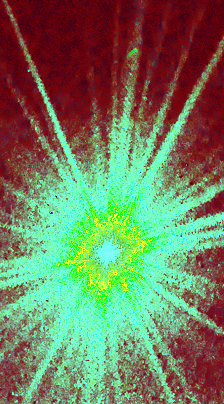Retina inspires new detector
 A new flexible detector may revolutionise greenhouse gas monitoring.
A new flexible detector may revolutionise greenhouse gas monitoring.
Researchers at the ARC Centre of Excellence for Transformative Meta-Optical Systems (TMOS) have made what could be a major discovery in the fight against global warming.
Their study, published in Advanced Functional Materials, unveils a new flexible photodetector capable of detecting a wide range of radiation, from visible to long-wave infrared.
Unlike conventional cameras that rely on complex optics and flat sensor arrays, the new technology requires minimal optical components, making it ideal for monitoring greenhouse gas emissions using drones and satellites.
Traditional monitoring methods have high production and operating costs while offering limited spectral ranges.
But the TMOS researchers say that the new flexible photodetectors enable curved focal plane arrays, resembling the human eye's retina, to capture images using a simple lens.
Furthermore, these detectors operate at room temperature, eliminating the need for cryogenic cooling.
The researchers' breakthrough lies in the simplicity and scalability of their production process, significantly reducing costs.
Unlike commercial infrared detectors that rely on complex materials and large-scale fabrication processes, the new photodetectors use a mixture of vanadium oxide (VOx) nanospheres and alcohol.
This mixture, applied to flexible circuitry at low temperatures, eliminates the need for additional components like bridges, vacuum packs, or complex optics.
The technology has transformative potential across several industries. The integration of infrared detectors into flexible platforms offers benefits in telecommunications, imaging, sensing, surveillance, med-tech wearable sensors, high-performance cameras, and lightweight drone-operated sensors for agritech applications.
The researchers now aim to develop a curved focal plane array as the next step in their research.
More details are accessible here.








 Print
Print